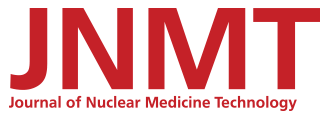
Many thanks to all of you who stopped by the NMTCB booth at the SNM Annual Meeting to express your good wishes on the 25th anniversary of the NMTCB. Your thoughtfulness and support are much appreciated. While at the meeting, I received several queries that may be of general interest so I will answer them here:
What effect do Nuclear Regulatory Commission (NRC) changes have on the examinations?
The NMTCB does not expect examinees to be familiar with regulations that are no longer in effect. Examinations will only contain questions on the most current NRC regulations. When NRC regulations change, as happened in October 2002, the entire examination is reviewed to identify all items that include any reference to an NRC regulation. These items are further reviewed to determine if the NRC changes affect them, then they are modified, if necessary, to reflect the new regulation.
Why does it seem that some questions are “out-of-date”?
The Board regularly scans the operational pool of questions from which each examination is created and removes items that are no longer current. One thing that may cause the perception that out-of-date questions are still on the examinations is that some radiation safety techniques that are no longer regulated by the NRC are still considered best practice, e.g., the use of dose calibrators. Covering such practices is an important part of the examination.
What is the status of the PET and PET/CT examinations?
The Board is working feverishly to complete a PET specialty examination by the end of the year. Simultaneously, the Board is working on PET questions for the PET portion of a PET/CT examination. We are waiting for a decision by the American Association of Radiologic Technologists (ARRT) on the CT component of a hybrid examination. ARRT will decide whether NMTs can take the ARRT CT examination, and what the criteria will be for NMTs to sit for the examination.
How does the NMTCB determine what to ask on the entry-level examination?
Every 5 years the NMTCB conducts a task analysis survey. The survey is sent to approximately 3000 technologists randomly selected but balanced by region of country, size of facility, and years of practice. The survey covers all aspects of a technologist’s responsibility according to the “scope of practice” for NMTs. The responses to the survey provide a general snapshot of the practice of nuclear medicine and the responsibilities of NMTs in the U.S., and the task analysis for the profession is developed based on the survey responses.
Each item (question) in the pool of items from which each examination is created is then reviewed and compared with the new task analysis to determine if the item is still valid and appropriate. If the item is still valid and the psychometric statistics for the item are acceptable, the item remains in the pool. If an item addresses procedures that are no longer being performed or are being performed rarely, the item involving that procedure is deleted. If there are new procedures, equipment, or radiopharmaceuticals to be included on the examination, new items are developed and introduced into a “pretest pool” of items.
The examinations is continually monitored and modified; for example, radiopharmaceuticals that are no longer commercially available will be removed from the Pharmaceuticals List and corresponding items will be removed from the examination’s operational pool. In addition, new items are continuously being “pretested” for inclusion in the operational pool by trying them out in examinations. (Pretest items are not used in calculating scores.) The results of the task analysis are printed in the March issue of the JNMT before changes based on it are incorporated into the examination.
How can I write items (questions) for the NMTCB?
If you are interested in writing items for the NMTCB, contact the office and request an item-writer packet. In the packet there are instructions for how to write quality examinations items. Items are always needed for all examinations—general, cardiology, PET, and PET/CT.
What is happening with the mandated continuing education requirement and why?
As a result of the topic of mandatory CE being addressed in detail in the most recent NMTCB newsletter, several individuals have queried the NMTCB directors and staff about the possibility of implementing this requirement in the near future. They wanted to know why the NMTCB is implementing the requirement when a majority of the individuals who responded to a survey that was included in the renewal mailing last year opposed mandated CE. However, the difference between those opposed to mandatory CE and those favoring it was just 321 out of more than 13,000 responses. With a margin that slim, it would be fairer to say that the survey respondents were evenly split.
The Board will be discussing everyone’s comments and concerns regarding mandatory CE at the Board meeting in September. However, we must consider that the healthcare world in general is becoming CE mandated whether we like it or not. Also, the passage of the CARE Act on the federal level will require states to mandate continuing education.
It was the impression by some that the NMTCB was going to offer CE or award credit for CE. Neither of these impressions is true. The NTMCB will be requiring that current members report CE credits that have been acquired elsewhere. Which CE credits will be accepted will be discussed at the next NMTCB meeting and will be explained in a future JNMT column. The Board is not looking for this to be cumbersome for anyone. Credits that are already accepted by existing agencies should be accepted by the NMTCB.
For an application for any exam or for current information on the most recent Components of Preparedness and the Procedures, Equipment, and Pharmaceutical Lists, refer to the NMTCB web site at www.nmtcb.org. If you have any comments or questions, please feel free to contact me at kmw4088@rit.edu.







